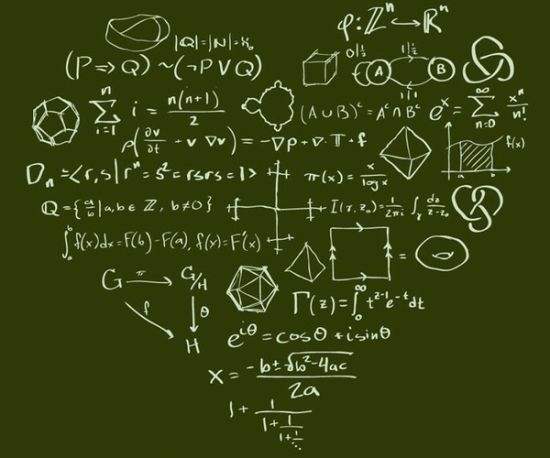leetcode数据库 相似题目总结
作者:whisper
链接:http://proprogrammar.com:443/article/801
声明:请尊重原作者的劳动,如需转载请注明出处
今天状态很差(什么时候状态好过呢),因为很久没更新了,所以逼着自己写一点东西,所以就只说一下自己的解题思路,学习一下人家的解题方法
615. 平均工资:部门与公司比较
给如下两个表,写一个查询语句,求出在每一个工资发放日,每个部门的平均工资与公司的平均工资的比较结果 (高 / 低 / 相同)。
表:
salary| id | employee_id | amount | pay_date | |----|-------------|--------|------------| | 1 | 1 | 9000 | 2017-03-31 | | 2 | 2 | 6000 | 2017-03-31 | | 3 | 3 | 10000 | 2017-03-31 | | 4 | 1 | 7000 | 2017-02-28 | | 5 | 2 | 6000 | 2017-02-28 | | 6 | 3 | 8000 | 2017-02-28 |employee_id 字段是表
employee中 employee_id 字段的外键。| employee_id | department_id | |-------------|---------------| | 1 | 1 | | 2 | 2 | | 3 | 2 |对于如上样例数据,结果为:
| pay_month | department_id | comparison | |-----------|---------------|-------------| | 2017-03 | 1 | higher | | 2017-03 | 2 | lower | | 2017-02 | 1 | same | | 2017-02 | 2 | same |解释
在三月,公司的平均工资是 (9000+6000+10000)/3 = 8333.33...
由于部门 '1' 里只有一个 employee_id 为 '1' 的员工,所以部门 '1' 的平均工资就是此人的工资 9000 。因为 9000 > 8333.33 ,所以比较结果是 'higher'。
第二个部门的平均工资为 employee_id 为 '2' 和 '3' 两个人的平均工资,为 (6000+10000)/2=8000 。因为 8000 < 8333.33 ,所以比较结果是 'lower' 。
在二月用同样的公式求平均工资并比较,比较结果为 'same' ,因为部门 '1' 和部门 '2' 的平均工资与公司的平均工资相同,都是 7000 。
select depS.month pay_month, depS.department_id, case when depS.depAvg > comS.comAvg then 'higher'
when depS.depAvg < comS.comAvg then 'lower' else 'same' end comparison
from(
select e.department_id, m.month, avg(s.amount) depAvg
from employee e inner join salary s on e.employee_id = s.employee_id
inner join (
select distinct date_format(pay_date, '%Y-%m') month
from salary
) m on m.month = date_format(s.pay_date, '%Y-%m')
group by e.department_id, m.month
) depS inner join (
select m.month, avg(s.amount) comAvg
from salary s inner join (
select distinct date_format(pay_date, '%Y-%m') month
from salary
) m on m.month = date_format(s.pay_date, '%Y-%m')
group by m.month
) comS on depS.month = comS.month我的写法思路很清楚,先分别求出每个部门的平均工资与公司的平均工资,然后比较,有点技巧的就是日期的处理,从年月日的日期转换个年月
看一下效率较高的写法
select t2.pay_month,t2.department_id,
case
when t1.company_salary<t2.department_salary then 'higher'
when t1.company_salary>t2.department_salary then 'lower'
else 'same'
end as comparison
from
(select employee.department_id,date_format(pay_date,'%Y-%m') as pay_month,avg(amount) as department_salary from salary
left join employee on salary.employee_id=employee.employee_id group by department_id,pay_month) t2
join
(select date_format(pay_date,'%Y-%m')as pay_month,avg(amount) as company_salary from salary group by pay_month) t1
on t1.pay_month=t2.pay_month
order by department_id,t2.pay_month;与我写得思路也差不多,有一点可以注意下,group by中的pay_month并不是实际的字段,而是pay_date处理后的字段,可见group by中的排序字段可以是来自于select中处理过的字段,而并不一定要是实际表中的字段
1251. 平均售价
Table:
Prices+---------------+---------+ | Column Name | Type | +---------------+---------+ | product_id | int | | start_date | date | | end_date | date | | price | int | +---------------+---------+ (product_id,start_date,end_date) 是 Prices 表的主键。 Prices 表的每一行表示的是某个产品在一段时期内的价格。 每个产品的对应时间段是不会重叠的,这也意味着同一个产品的价格时段不会出现交叉。Table:
UnitsSold+---------------+---------+ | Column Name | Type | +---------------+---------+ | product_id | int | | purchase_date | date | | units | int | +---------------+---------+ UnitsSold 表没有主键,它可能包含重复项。 UnitsSold 表的每一行表示的是每种产品的出售日期,单位和产品 id。编写SQL查询以查找每种产品的平均售价。
average_price应该四舍五入到小数点后两位。
查询结果格式如下例所示:Prices table: +------------+------------+------------+--------+ | product_id | start_date | end_date | price | +------------+------------+------------+--------+ | 1 | 2019-02-17 | 2019-02-28 | 5 | | 1 | 2019-03-01 | 2019-03-22 | 20 | | 2 | 2019-02-01 | 2019-02-20 | 15 | | 2 | 2019-02-21 | 2019-03-31 | 30 | +------------+------------+------------+--------+ UnitsSold table: +------------+---------------+-------+ | product_id | purchase_date | units | +------------+---------------+-------+ | 1 | 2019-02-25 | 100 | | 1 | 2019-03-01 | 15 | | 2 | 2019-02-10 | 200 | | 2 | 2019-03-22 | 30 | +------------+---------------+-------+ Result table: +------------+---------------+ | product_id | average_price | +------------+---------------+ | 1 | 6.96 | | 2 | 16.96 | +------------+---------------+ 平均售价 = 产品总价 / 销售的产品数量。 产品 1 的平均售价 = ((100 * 5)+(15 * 20) )/ 115 = 6.96 产品 2 的平均售价 = ((200 * 15)+(30 * 30) )/ 230 = 16.96
select u.product_id, round(sum(p.price * u.units) / sum(u.units), 2) average_price
from UnitsSold u, Prices p
where u.product_id = p.product_id and u.purchase_date >= p.start_date and u.purchase_date <= p.end_date
group by u.product_id按产品分组,根据某时间段获取价格,平均价格=总价/总数,其中总价又是各个时间段单价*数量之和,可以想一想为什么average_price可以round(sum(p.price * u.units) / sum(u.units), 2)这样求
下面看一种效率高的
select
product_id, round(sum(total)/sum(units),2) as average_price
from
(
select
B.product_id, A.price * B.units as total, B.units
from Prices A
join UnitsSold B on A.product_id = B.product_id
and B.purchase_date >= A.start_date
and B.purchase_date <= A.end_date
) A
group by product_id这种写法还没有我写的简洁,不知道为什么效率会高,leetcode的问题吧(是不是升级服务器了)
603. 连续空余座位
几个朋友来到电影院的售票处,准备预约连续空余座位。
你能利用表 cinema ,帮他们写一个查询语句,获取所有空余座位,并将它们按照 seat_id 排序后返回吗?
| seat_id | free | |---------|------| | 1 | 1 | | 2 | 0 | | 3 | 1 | | 4 | 1 | | 5 | 1 |对于如上样例,你的查询语句应该返回如下结果。
| seat_id | |---------| | 3 | | 4 | | 5 |注意:
seat_id 字段是一个自增的整数,free 字段是布尔类型('1' 表示空余, '0' 表示已被占据)。
连续空余座位的定义是大于等于 2 个连续空余的座位。
select distinct c1.seat_id
from(
select seat_id
from cinema
where free = 1
) c1 inner join cinema c2 on c2.free = 1 and (c1.seat_id = c2.seat_id + 1 or c1.seat_id = c2.seat_id - 1)
order by c1.seat_idcinema两表进行自连接,找出相邻都空的,由于找出的是组合(可能是1,2空,也可能是2,1空),所以最后去一下重
看一种效率较高的解法
SELECT DISTINCT a.seat_id
FROM cinema as a join cinema as b
ON abs(a.seat_id-b.seat_id)=1
AND a.free=1 and b.free=1
ORDER by a.seat_id这种简单题没有多少个人发挥的空间,解法大同小异,不过这里用了一个abs函数,而且去掉了子查询,更简洁
180. 连续出现的数字
编写一个 SQL 查询,查找所有至少连续出现三次的数字。
+----+-----+ | Id | Num | +----+-----+ | 1 | 1 | | 2 | 1 | | 3 | 1 | | 4 | 2 | | 5 | 1 | | 6 | 2 | | 7 | 2 | +----+-----+例如,给定上面的
Logs表,1是唯一连续出现至少三次的数字。+-----------------+ | ConsecutiveNums | +-----------------+ | 1 | +-----------------+
select distinct l1.Num as ConsecutiveNums
from Logs l1, Logs l2, Logs l3
where l1.Id = l2.Id - 1 and l2.Id = l3.Id - 1 and l1.Num = l2.Num and l2.Num = l3.Num;既然连续出现三次,那就自连接两次,id相邻且数字相同,同样由于查出的是组合,要去重一下
下面看一下另一种解法
select distinct Num as ConsecutiveNums
from (
select Num, if(@pre=Num, @a:=@a+1, @a:=1) as n, @pre:=Num midVal
from Logs, (select @a:=0, @pre:='a') t
) as temp
where n >= 3
order by Num desc;利用两个变量处理相邻每一行,一个用于存值比较,一个用于计数,这里补充一下,对于select中的结果,如字段,变量,如果用于select结果中的select子查询,是不可以用于多层select子查询中的,也就是说只能用在最外层,这是工作中发现一个事情
613. 直线上的最近距离
表
point保存了一些点在 x 轴上的坐标,这些坐标都是整数。写一个查询语句,找到这些点中最近两个点之间的距离。
| x | |-----| | -1 | | 0 | | 2 |最近距离显然是 '1' ,是点 '-1' 和 '0' 之间的距离。所以输出应该如下:
| shortest| |---------| | 1 |注意:每个点都与其他点坐标不同,表 table 不会有重复坐标出现。
进阶:如果这些点在 x 轴上从左到右都有一个编号,输出结果时需要输出最近点对的编号呢?
select p.dis shortest
from(
select abs(p1.x - p2.x) dis
from point p1, point p2
where p1.x != p2.x
) p
order by p.dis
limit 1自连接求出每两点之间的距离,排个序,取最小的
看另一种解法
select convert(sub,decimal(10,0)) 'shortest' from (select @sub:=(case when @pre is null then 0 else x-@pre end) sub, @pre:=x from `point` ,(select @sub:=0,@pre:=null) n order by x) s order by sub limit 1,1还是使用两个变量,没有用连接,这里可以看出对select结果中sub的处理是在order by x排序之后,要注意一下最后limit 1, 1,因为第一个是0,要排除一下
612. 平面上的最近距离
表 point_2d 保存了所有点(多于 2 个点)的坐标 (x,y) ,这些点在平面上两两不重合。
写一个查询语句找到两点之间的最近距离,保留 2 位小数。
| x | y | |----|----| | -1 | -1 | | 0 | 0 | | -1 | -2 |最近距离在点 (-1,-1) 和(-1,2) 之间,距离为 1.00 。所以输出应该为:
| shortest | |----------| | 1.00 |注意:任意点之间的最远距离小于 10000 。
select round(sqrt(p2.pow2), 2) shortest
from(
select (p1.x - p2.x) * (p1.x - p2.x) + (p1.y - p2.y) * (p1.y - p2.y) pow2
from point_2d p1, point_2d p2
where p1.x != p2.x or p1.y != p2.y
) p2
order by p2.pow2
limit 1我的思路都很直接粗暴,先求出所有点的距离,然后排序取最小的,这里有个技巧是先求距离的平方,最后再开方取距离
看另一种解法
select round(min(sqrt(pow(a.x-b.x,2)+pow(a.y-b.y,2))),2) as shortest
from point_2d as a, point_2d as b
where a.x!=b.x or a.y!=b.y这里直接用min函数求最小,而不是像上面分步来做,先求距离,再取最小,所以多掌握一些常用函数还是很有用的,把问题交给sql内部去处理,而不是自己来处理
亲爱的读者:有时间可以点赞评论一下
作者其它文章
- 数字图像处理
- 剑指offer2
- 工作学习
- 这些算法有自己的方法
- 插件
- 软件使用
- 数学
- mybatis
- 计算机网络
- 正则表达式专栏
- 问题记录
- Thymeleaf
- zuul
- hystrix
- 正则表达式
- feign
- 编程相关技术
- ribbon
- 微服务
- eureka
- 分布式
- 模板
- angularjs
- javascript
- html
- c++ grammar
- c grammar
- python grammar
- java grammar
- 软件工程
- 数据库系统概论
- 转载
- 小知识
- 考研
- webservice
- 网络
- struts2
- springmvc
- springboot
- redis
- mongodb
- hibernate
- 计算机组成原理
- 当代世界经济与政治
- leetcode
- 思想道德修养与法律基础
- 毛泽东思想和中国特色社会主义理论体系概论
- 作乐
- 生活点滴
- 娱乐
- 中国近现代史纲要
- 操作系统
- sunny day, singing day
- 设计模式与算法
- 框架
- 概率论与数理统计
- 线性代数
- JAVA
- 前端
- 数据库
- 马克思主义基本原理概论
- 软考
- 生活,生,活
- 晴雨
- CSS
- LINUX
- java web整合开发王者归来
- 英语
- 高等数学
- 数据结构



















全部评论